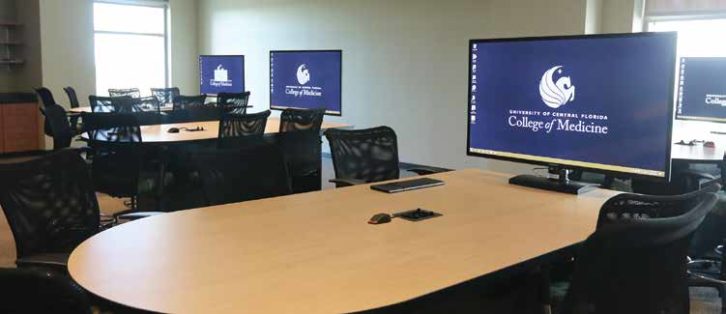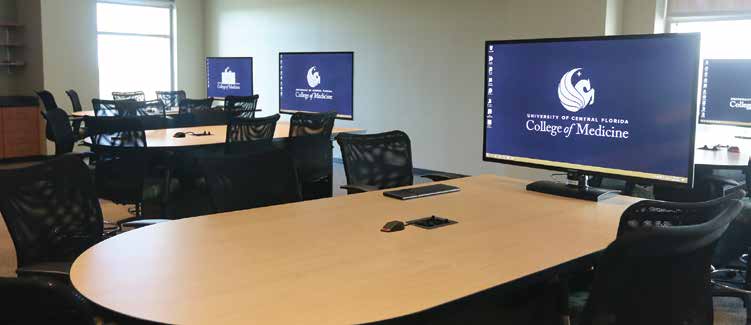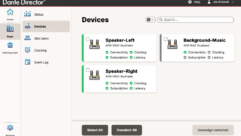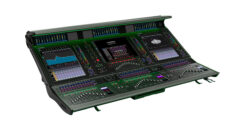

The University of Central Florida (UCF) College of Medicine is one of the more technologically advanced medical teaching facilities in the country. In 2010, it became the first med school in the U.S. to give Apple iPads to its medical student charter class. A year later, all full-time teaching faculty at the College of Medicine also received iPads. So it isn’t surprising that the UCF College of Medicine has also become an early adopter of the ATND971 Cardioid Condenser Boundary Microphone with Dante Network Output from Audio-Technica, the first wired microphones that transmit audio and control data together over the Dante network protocol.
Twenty-one of these networkable microphones were installed this summer in 4,648 square foot, 164 ft. wide teaching lab in the Medical Education Building on the school’s 50-acre campus in Orlando, Florida. These mics provide clear, intelligible sound throughout the large, curved room, as well as control capability, in conjunction with a Biamp Tesira Server IO DSP system and ceiling speakers above each table. The entire update was installed and programmed by the college’s own AV department.
The Team Learning Lab had always been a challenging space when it came to sound: it’s very wide, is semicircular in shape, and has a low ceiling, making communications from one side of the room to the other difficult. Plus, the hard surfaces like walls and the lab tables themselves further hampered speech intelligibility. Wireless microphone solutions had been tried before in the room, but they were expensive and not convenient for allowing everyone in the room to have quick access to a handheld microphone.
Michael Reaves, director of systems engineering at the UCF College of Medicine says he and his colleagues considered a wired solution but since the room had no conduit, expanding the infrastructure would not have been cost effective. However, each lab table did have a network connection. “We realized that we could plug the ATND971 into an Ethernet port, and after using Dante controller software to associate the mics with the DSP, have a plug-and-play audio system that sounded excellent and offered far more control than we’d ever had before,” says Reaves. “And the ATND971 runs on PoE, and the Ethernet ports already had PoE, so we were ready to go.”
Now, each lab table has an A-T ATND971 microphone programmed for push-and-hold to talk, which assures that multiple microphones will not remain on simultaneously, and a mix-minus has been programmed into the DSP system that mutes the ceiling speaker above whichever microphone is on, eliminating the potential for feedback and allowing the system to operate at a higher volume level. Reaves says the addition of the ATND971 networked microphone was part of a larger technology upgrade over the summer that also saw new products including Biamp Tesira Server IO, Crestron CP3N 3 series control system, Crestron TSW- 1060 smart graphics touchpanels, Intel NUC computers with Logitech K830 wireless keyboards at every table, three Crown CT8150 amplifiers powering 24 KSI ceiling speakers, and Zoom content sharing technology integrated into the classroom.










